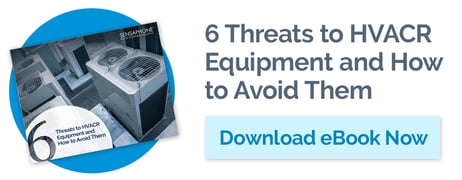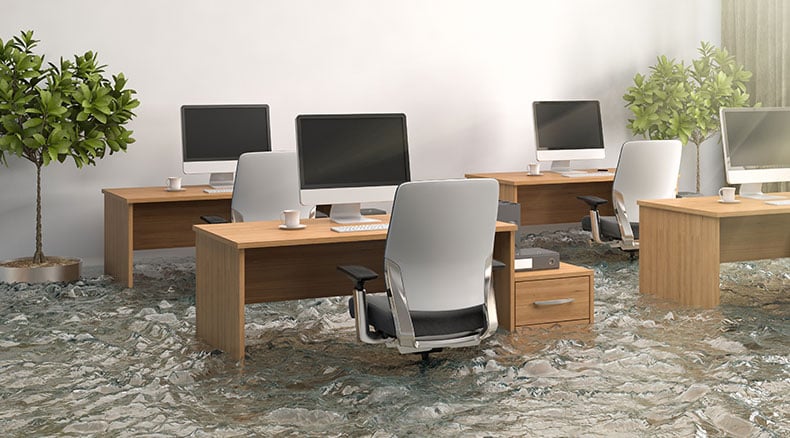
Commercial buildings can experience water damage from leaks originating from a roof, plumbing, HVAC water heater, or sprinkler system malfunction. If not detected early, water damage can result in expensive building and equipment repairs, extensive cleanups, musty smells, poor indoor air quality, and downtime.
According to Water Damage Defense, the average cost of water damage caused by leaking water heaters is $3,642, while faulty plumbing can result in costs exceeding $17,200.
Water detection systems can provide early notification of leaks to prevent them from causing extensive environmental and physical damage, contamination, and high repair costs. The heart of these water detection systems are sensors that detect the presence of unwanted water and send an alarm to the monitoring device. If an alarm condition is detected, alarm messages are sent to specified personnel via text, email, or phone.
Sensaphone remote monitoring systems connect with different water detection sensors to continuously monitor for water leaks throughout a facility. Building operators can choose from different leak detection systems such as spot detectors for high-risk areas, widespread water detectors for larger areas such as server rooms, and wireless system configurations. Read on to learn the differences among these water detection devices and how they operate as part of a remote monitoring system.
Water Detection in Small Areas
Spot leak detection systems monitor targeted areas for water. They are economical for smaller and/or confined areas where water leaks are more likely to occur such as at a pipe junction or low flooring where water puddles.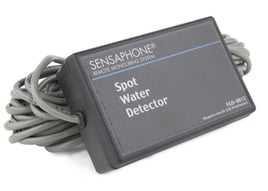
Sensors are a major component of these systems. For example, the Sensaphone Spot Water Detectors sense the presence of any water and send alerts when conditions change from dry to wet. The detector is either hard wired or wirelessly connected to a Sensphone Remote Monitoring System that receives the sensor data and pushes it to a control system for alarm and reporting purposes.
Multiple Spot Water Leak Detectors can be wired to a single Sensaphone input to cover a larger area. The system operates on a 24/7 basis to protect sites from water leaks. It is compatible with any Sensaphone remote monitoring system.
.
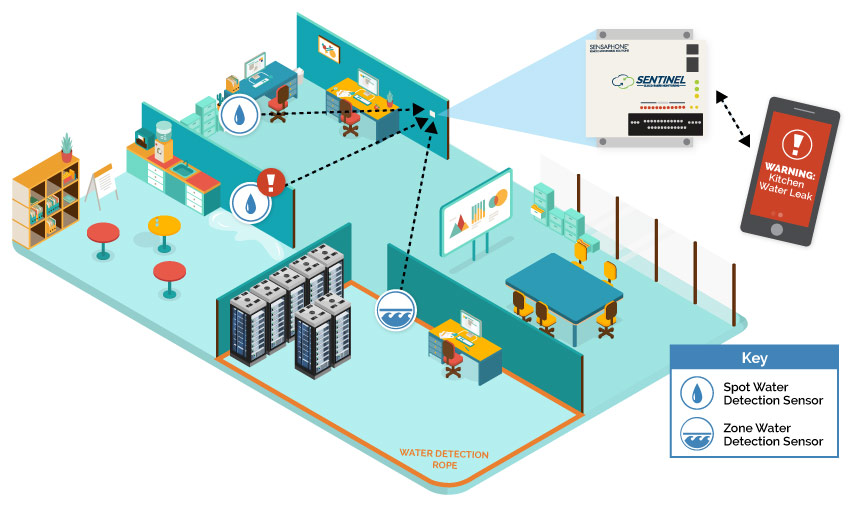
Figure 1: Water Detection Sensors in Office
Zone water detection
Zone-type water detection systems are ideal for identifying water leaks in more widespread areas that are susceptible to flooding or where water damage can be detrimental to facility equipment. Sensaphone offers Zone Water Detection Sensors that are either hard-wired or wirelessly connected to its remote monitoring system.
Featuring a water rope, the Water Detection Sensor puts a system into an alarm state when water touches the rope. Its 10 feet of water rope covers a larger open area than the spot leak detector which is better suited for precise areas. 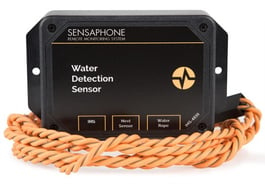
Water Detection Sensors can be placed inside a drop ceiling, beneath a raised floor, or in spaces between floors. Ten water ropes can be linked together to cover 100 square feet of space around the perimeter of a floor, along pipelines, and throughout server rooms.
Different sensor configuration
Sensaphone Zone and Spot Water Detection Sensors are available in different configurations.
• Dry Contact Zone and Spot Water Detectors are hard-wired to a Sensaphone Remote Monitoring System. These Water Detection Sensors are powered by user-replaceable batteries that require a dry contact input so they will alert when conditions change from dry to wet.
• An IMS Solution Zone Water Detection Sensor offers widespread water detection and is only compatible with a Sensaphone IMS remote monitoring system. While the dry contact water detectors require a battery and maintenance to change it, these sensors are powered by a connection to the IMS Host or node that requires no operator intervention.
• WSG Wireless Water Detection Sensors are compatible only with WSG30 Remote Monitoring Systems, a wireless solution that offers network-based monitoring in areas where running wires can be difficult. They save the hassle of wiring sensors to the Sensaphone Remote Monitoring System, allowing it to be mobile. Offered for spot water or zone water detection, these sensors can be battery-powered or use batteries as a backup in the event of a power failure. Up to 30 wireless sensors can be connected to the monitoring system.
Users of existing Sensaphone systems can easily add a water detection sensor to their system to extend remote monitoring capabilities to water detection throughout their facility. Sensaphone also can recommend a remote monitoring system capable of water detection for new installations.
Find out about the different Sensaphone monitoring systems and communication methods at The Sensaphone Family | Sensaphone or contact our sales team at https://www.sensaphone.com/contact-sales-team

